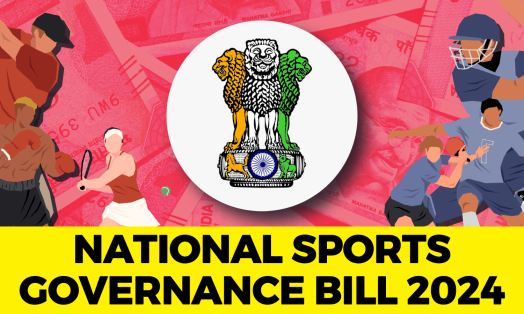India’s National Sports Policy has played a pivotal role in shaping the country’s sports ecosystem. Despite some notable successes in recent years, significant challenges remain in achieving consistent excellence on the global stage. For India to emerge as a true sports powerhouse, crucial changes in its national sports framework are necessary.
One of the most pressing concerns is grassroots sports development. While elite athletes receive considerable support, there is a lack of systematic programs for identifying and nurturing talent at the grassroots level. To bridge this gap, schools and local clubs must be equipped with better facilities, trained coaches, and regular competition opportunities. Without a strong foundation at the grassroots, India risks missing out on potential world-class athletes.
Infrastructure development is another key area that needs attention. Many sports facilities in India are outdated or poorly maintained. Although major cities boast a few world-class stadiums, smaller towns and rural areas often lack even basic amenities. Building and maintaining modern training centers across the country would allow more athletes to train in a professional environment, fostering greater participation in sports.
Funding and sponsorship also require significant reform. While certain sports like cricket attract substantial corporate sponsorship, others struggle for basic financial support. A more balanced allocation of resources, along with incentives for private sector investment in less-prominent sports, could help level the playing field. Additionally, creating a transparent funding mechanism would ensure that resources reach deserving athletes and programs.
The role of coaches and sports science experts is critical in shaping athletes’ performance. However, India faces a shortage of qualified coaches and support staff. Regular training and certification programs for coaches, alongside increased investment in sports science, physiotherapy, and mental conditioning, would provide athletes with a well-rounded support system.
Sports education and awareness need to be integrated into school curriculums. Encouraging students to take up sports seriously by offering academic credits, scholarships, and career counseling can help foster a sports-friendly culture. Recognizing sports as a viable career option, with adequate post-retirement benefits for athletes, would go a long way in motivating the youth to pursue sports.
Another aspect that needs reform is governance and administration. Several sports federations in India are plagued by bureaucracy, lack of professionalism, and infighting. Ensuring that sports bodies are run by competent professionals with a clear vision for development is crucial. Implementing strict accountability and transparency measures in sports administration can help in creating a more efficient ecosystem.
Gender equality in sports also demands urgent attention. Despite progress, women in sports still face societal and financial hurdles. Special schemes to promote women’s participation and remove gender-based barriers can contribute to a more inclusive sports environment.
Lastly, India’s National Sports Policy should focus on leveraging technology. From using data analytics to improve performance to creating digital platforms for talent scouting and training, technology can be a game-changer in sports development.
India has immense potential to become a leading sports nation. With strategic reforms in policy, infrastructure, funding, and governance, the country can create a robust sports ecosystem that nurtures talent and delivers consistent results on the global stage. For India to achieve sporting excellence, its National Sports Policy must evolve to meet the changing demands of modern sports.
